Physical Address
304 North Cardinal St.
Dorchester Center, MA 02124
Physical Address
304 North Cardinal St.
Dorchester Center, MA 02124

Discover 19 expert patio design ideas specifically created for multi-generational families. Learn how to create outdoor spaces that accommodate grandparents, parents, and children with accessible features, flexible zones, and thoughtful details that bring everyone together comfortably.
Imagine stepping through your back door into a vibrant outdoor sanctuary where three generations of your family gather comfortably—grandparents relaxing with tea while watching grandchildren play, parents preparing meals at an accessible outdoor kitchen, all sharing stories as evening falls. A thoughtfully designed patio becomes the heart of multi-generational living, creating spaces where families can connect while respecting everyone’s needs.
As a specialist in designing for extended families, I’ve seen how the right patio design transforms ordinary backyards into extraordinary gathering places that accommodate everyone from toddlers to grandparents. These outdoor spaces become more than just aesthetic additions—they’re functional extensions of your home where memories are created and family bonds strengthen across generations.
When planning a multi-generational patio, think beyond a single open space. Create distinct zones that serve different family members’ needs simultaneously. Consider a quiet conversation area with comfortable, supportive seating for older adults, an active play zone within sight but buffered by planters for children, and a central gathering area where everyone comes together for meals.

The magic happens when these zones flow naturally into one another while maintaining their distinct purposes. Use subtle level changes, different flooring materials, or partial walls to delineate spaces without disconnecting them. This approach allows grandparents to observe children playing while maintaining a comfortable distance from the noise and activity, creating harmony between different generations’ needs.
The inspiration for this collection struck when I visited a family whose patio featured a central dining space surrounded by a pergola, with a quiet reading nook for grandparents and a chalk-art area for grandchildren—all visible to one another but with appropriate separation.
Selecting the right patio materials isn’t just about aesthetics—it’s about creating a space accessible to family members of all ages and abilities. Opt for slip-resistant surfaces like textured concrete, certain natural stones, or specialized pavers that reduce fall risks for both young children and older adults. Avoid materials that become extremely hot in direct sunlight, as these can be dangerous for little hands and uncomfortable for everyone.
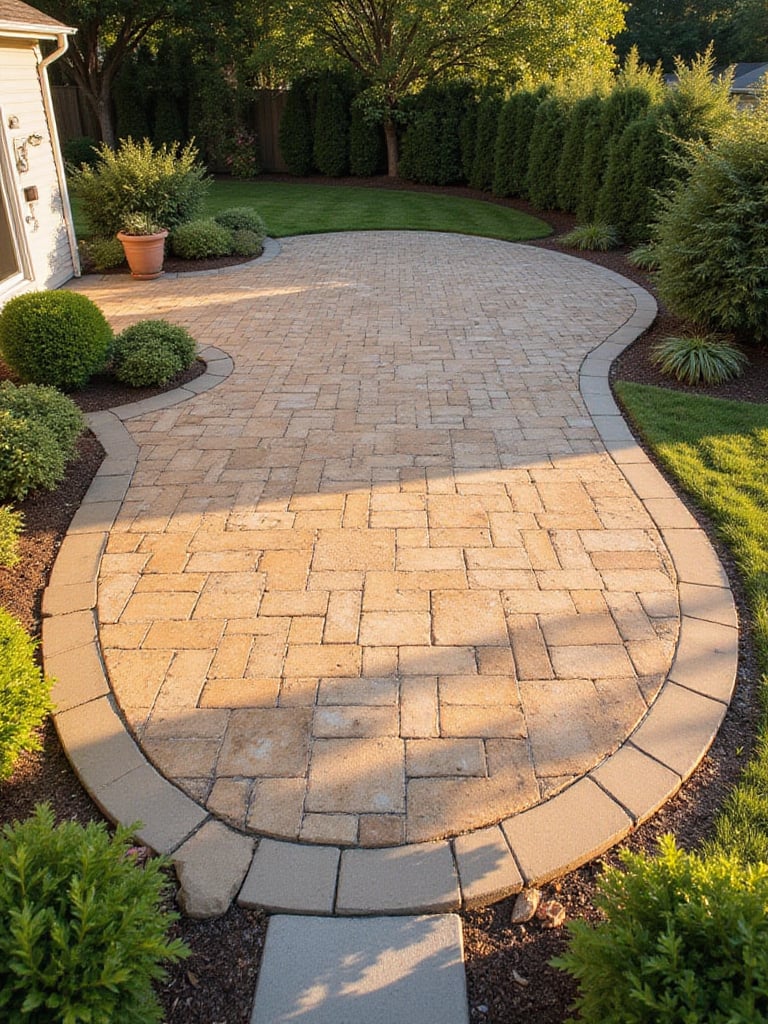
Consider how your material choices impact mobility devices like wheelchairs, walkers, or strollers. Smooth transitions between surfaces, minimal gaps between pavers, and appropriately firm surfaces make a tremendous difference in usability. Remember that highly reflective materials can create glare issues for aging eyes, while too-dark surfaces absorb heat uncomfortably.
Look closely and you’ll notice the subtle texture of well-designed multi-generational patios—they prioritize function alongside beauty, ensuring nobody feels excluded from family gatherings because of preventable design oversights.
The foundation of a successful multi-generational patio design lies in thoughtful seating that accommodates various physical needs and social preferences. Include seating at different heights—standard dining chairs, higher seats with arms for easier standing, and lower options for children. Ensure some seating includes proper back support and armrests for older adults, while maintaining a cohesive design aesthetic.
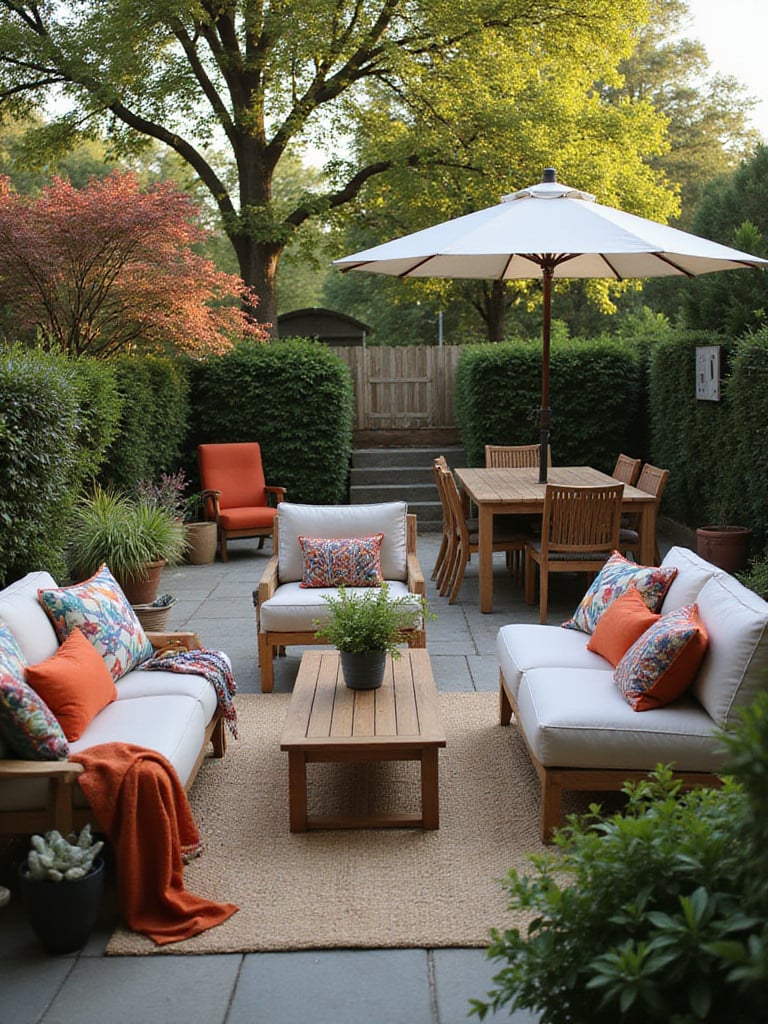
Movable furniture pieces give you flexibility to reconfigure spaces based on who’s visiting and what activities are planned. Consider including some cushioned options alongside more durable materials, allowing family members to choose based on their comfort preferences. Weather-resistant storage benches can double as seating while containing toys or cushions, maximizing functionality in your patio design.
For those worried about maintenance… modular furniture systems with washable, replaceable covers offer practical solutions for families with young children while maintaining comfort for all generations.
Thoughtful lighting transforms your patio from a daytime-only space to an evening gathering place where family memories continue after sunset. For multi-generational patios, lighting serves dual purposes: creating ambiance while ensuring safety for all ages. Install path lights along walkways to prevent trips and falls, particularly important for both older adults and young children.

Layer your lighting approach with ambient illumination for overall visibility, task lighting near functional areas like outdoor kitchens, and accent lighting to highlight architectural features. Consider adjustable brightness controls to accommodate aging eyes that may be sensitive to glare but still need adequate light to navigate safely. Motion-activated options can provide additional security and convenience.
When clients ask us about balancing style with comfort… I recommend warm-temperature lighting (2700-3000K) that creates a welcoming atmosphere while providing enough illumination for safety. This approach to patio design ensures everyone from grandparents to grandchildren can enjoy evening gatherings comfortably.
The challenge of multi-generational patio design often involves accommodating different temperature sensitivities. Older adults may feel cold in breezes that younger family members find refreshing, while children need protection from direct sun exposure. Incorporating varied, flexible shade options allows everyone to find their comfort zone throughout the day.
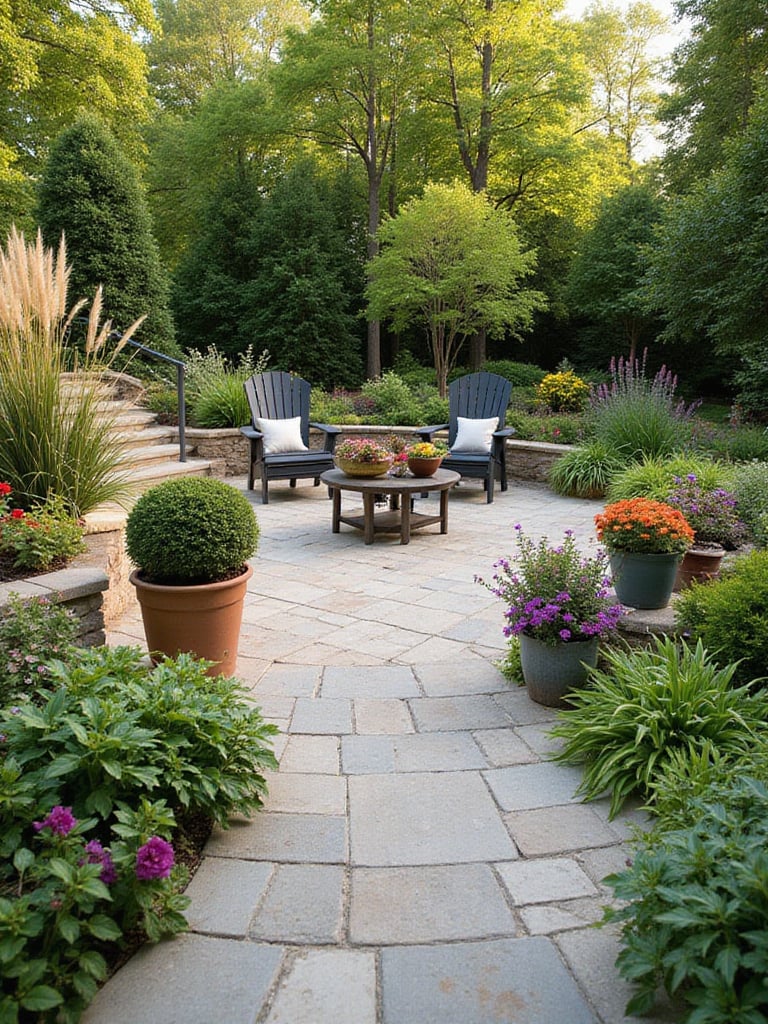
Consider a combination of permanent structures like pergolas or pavilions alongside adjustable elements such as retractable awnings, shade sails, or large umbrellas. This layered approach allows you to modify coverage as the sun moves and as different family members use the space. Remember that shade isn’t just about comfort—it’s a health consideration that protects vulnerable family members from harmful UV exposure.
The artisans behind these designs began with understanding how different generations use outdoor spaces throughout the day. Grandparents might enjoy morning sun but need afternoon shade, while children’s play areas benefit from consistent coverage during peak UV hours.
Water features add sensory richness to your patio design while serving multiple generations beautifully. For grandparents, the gentle sound of flowing water creates a peaceful backdrop that masks neighborhood noise and encourages relaxation. For children, interactive water elements provide endless fascination and play opportunities, especially during warmer months.

Choose designs with safety in mind—raised basins reduce tripping hazards for older adults while remaining accessible to children under supervision. Consider water walls, which provide soothing sounds without creating drowning hazards. Pondless waterfalls offer similar benefits with minimal maintenance requirements. These features become natural gathering points where generations connect through shared enjoyment.
The unexpected pairing that always works is combining water features with adequate seating nearby, creating conversation areas where grandparents can watch children interact with water elements while maintaining comfortable positions themselves.
Built-in features provide stability, permanence, and multi-functional benefits in a multi-generational patio design. Consider masonry seating walls that serve as both boundary markers and additional seating during larger gatherings. These solid elements offer secure support for older adults while doubling as play surfaces for children (think impromptu balance beams or surfaces for toy cars).
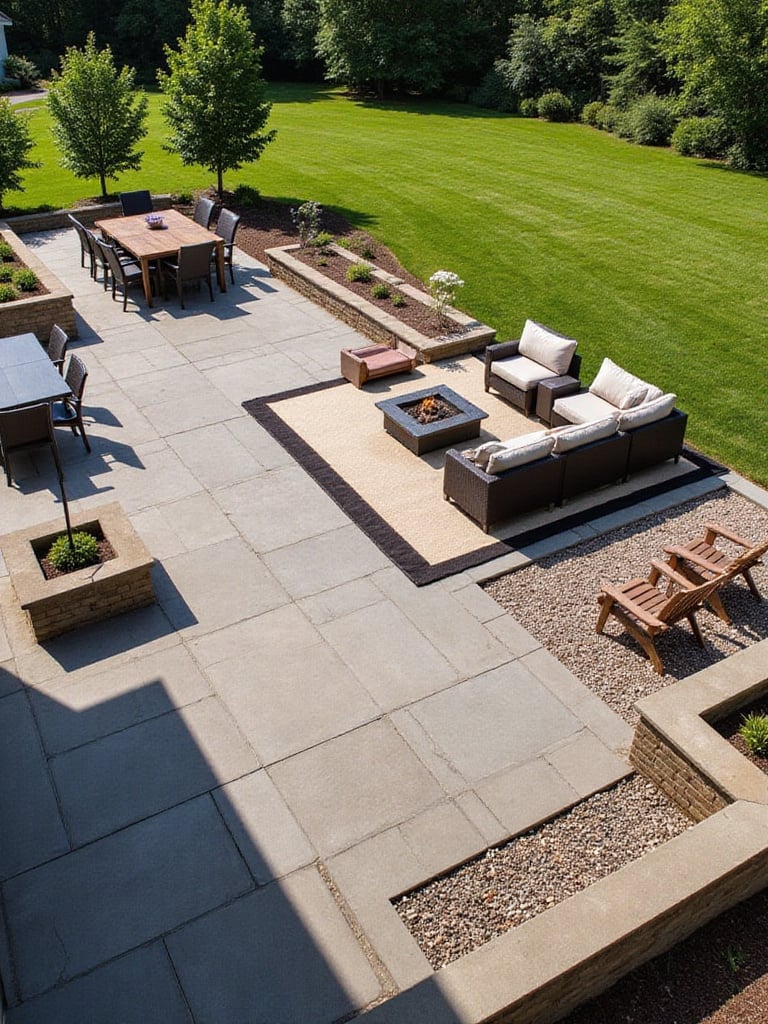
Integrated planters bring nature closer without creating obstacles and can be built at various heights to be accessible to family members who enjoy gardening but have mobility limitations. Built-in storage keeps toys, cushions, and outdoor dining essentials organized and protected. Consider how these permanent elements create the framework around which more flexible components can be arranged.
The designer’s secret here is to balance these permanent elements with flexible furniture arrangements, ensuring your patio design can evolve as your family’s needs change over time.
Creating privacy on a multi-generational patio requires thoughtful balance—you want enough seclusion to feel comfortable without creating isolated spaces that exclude family members. Consider vertical garden elements that provide screening while adding natural beauty, or decorative panels that filter views rather than blocking them completely.
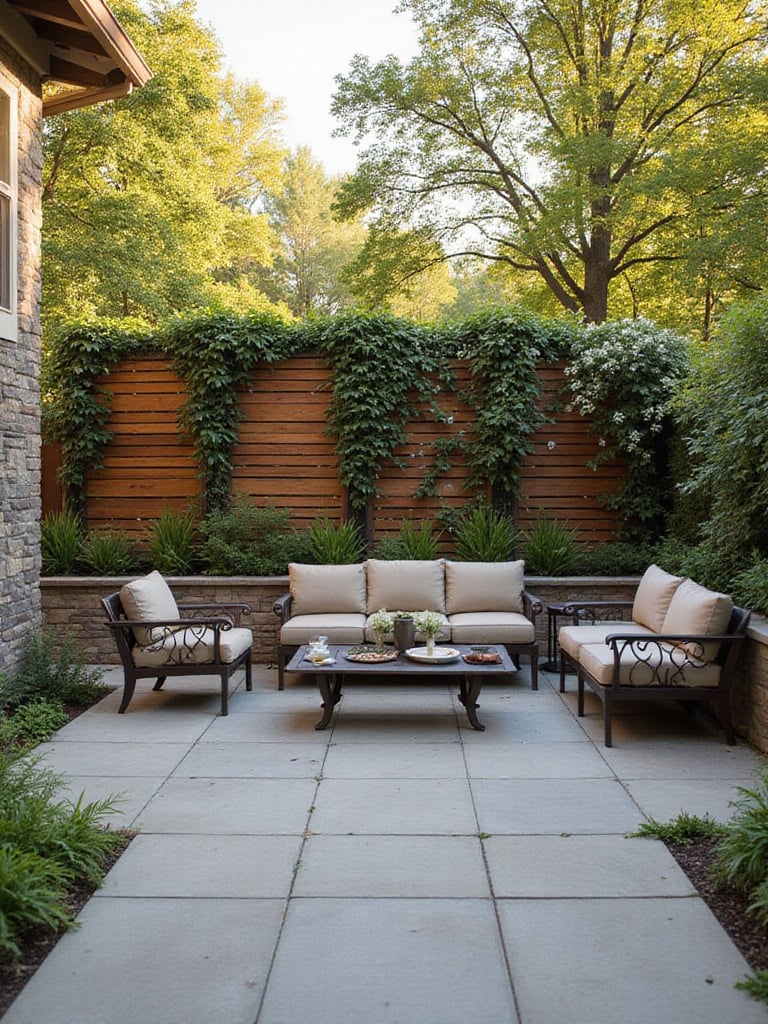
Strategically placed plantings offer seasonal privacy that changes throughout the year. Deciduous trees or shrubs provide summer screening when outdoor use is highest, while allowing beneficial winter sunlight to reach the patio. For families with older members who may need monitoring while still desiring independence, consider privacy solutions that maintain sightlines between different patio zones.
The visual weight balances perfectly when privacy elements are incorporated at varying heights, creating layers that feel protective without overwhelming the space. This approach to patio design ensures everyone feels comfortable without feeling cut off from family activities.
One of the most meaningful aspects of multi-generational patio design is creating spaces that honor your family’s cultural heritage. Incorporate elements that reflect traditions important to older generations—perhaps a dedicated area for traditional cooking methods, space for cultural games, or displays of meaningful artifacts protected from weather in custom niches.
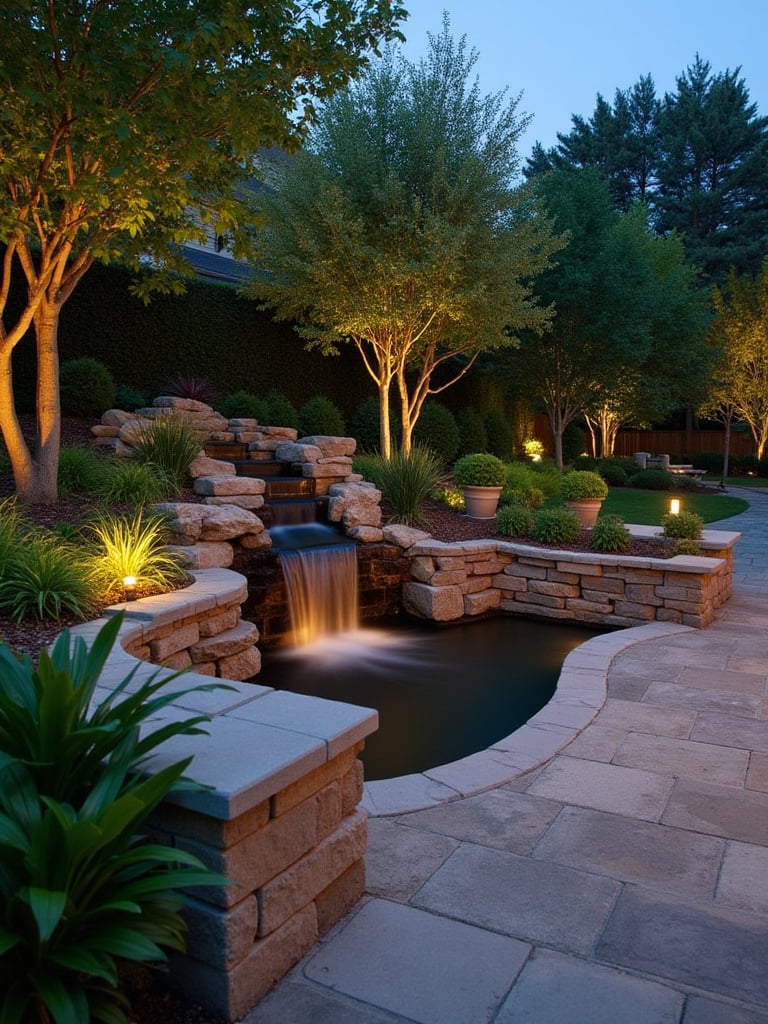
These cultural touchpoints become natural conversation starters between generations, creating opportunities for grandparents to share stories and traditions with younger family members. Consider how materials, colors, and spatial arrangements can subtly reference cultural backgrounds while still functioning beautifully in your contemporary setting.
The cultural heritage preserved in each piece includes memories and traditions that might otherwise be lost between generations. By thoughtfully incorporating these elements into your patio design, you create a living connection to your family’s history that enriches everyone’s experience.
Food preparation often serves as the heart of family gatherings, and a well-designed outdoor kitchen becomes a natural hub for multi-generational interaction. Consider counter heights that accommodate both standing adults and seated older family members who might prefer to participate while sitting. Include a lower section where children can safely help with simple food preparation tasks.
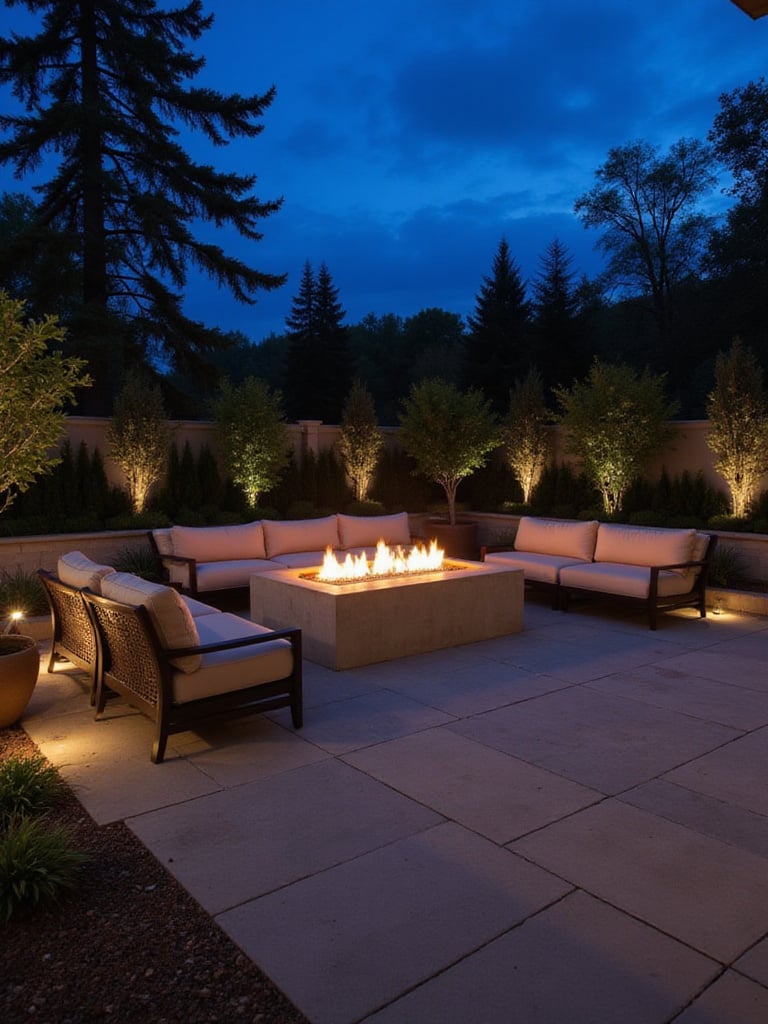
Ensure pathways around cooking areas are wide enough for safe passage even when multiple people are working, particularly if mobility devices are used. Think about the cooking traditions important to different generations in your family—perhaps incorporating a pizza oven alongside a modern grill, or creating space for traditional cooking methods that older family members value.
While designed for the living room, we’ve seen creative uses in outdoor kitchen spaces where families incorporate elements like magnetic knife strips at varying heights, pull-out cutting boards at different levels, and heat-resistant surfaces where hot pots can safely rest, making cooking a truly inclusive family activity.
Integrating play spaces within your patio design allows children to enjoy outdoor time while remaining under watchful eyes. Rather than relegating play to distant areas of the yard, incorporate kid-friendly zones within the patio’s overall footprint. Use durable, cleanable surfaces in these areas, and consider features like built-in game tables, weather-resistant storage for toys, or even simple elements like chalkboard surfaces on garden walls.
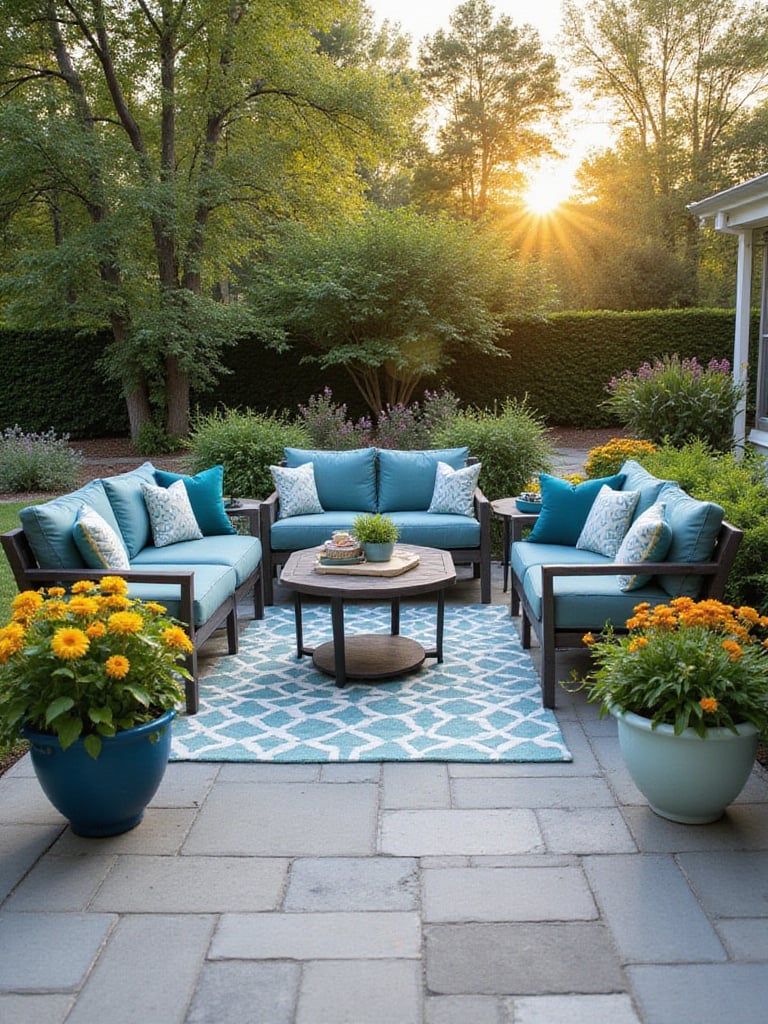
The key is maintaining clear sightlines between adult relaxation areas and children’s play spaces. This arrangement allows grandparents to observe and interact with younger generations without needing to move frequently. Consider how these spaces might evolve as children grow—features that delight toddlers should ideally transform to engage older children and eventually teenagers.
The challenge of awkward spaces becomes easier when you view your patio design through a multi-generational lens, seeing potential for specialized usage in areas that might otherwise seem problematic. That awkward corner becomes a perfect nook for a child’s outdoor reading area, visible from the main seating but slightly separated.
Practical storage is essential in multi-generational patio design, allowing family members of all ages to independently access and return items they use. Consider weather-resistant cabinets with easy-pull hardware, open shelving at various heights, and storage benches that provide both seating and containment for frequently used items.

For families with young children, incorporate some low storage options that encourage independence and responsibility. For older adults, ensure some storage is positioned at a height that doesn’t require bending or reaching. Weather-protected spaces for mobility aids like walkers ensure these essential tools remain readily available without becoming obstacles.
The composition comes together when storage elements are integrated so seamlessly into your patio design that they enhance rather than detract from the space’s beauty. Hidden storage beneath bench seating, decorative cabinets that complement your overall aesthetic, and multi-purpose furnishings maximize functionality without sacrificing style.
Extending your patio’s usable season maximizes its value for multi-generational gatherings. Consider how different family members experience temperature variations—older adults often feel cold more easily than younger generations, while children may be less aware of temperature extremes. Incorporate elements like outdoor heaters, cooling fans, and windbreaks to create micro-climates that keep everyone comfortable.
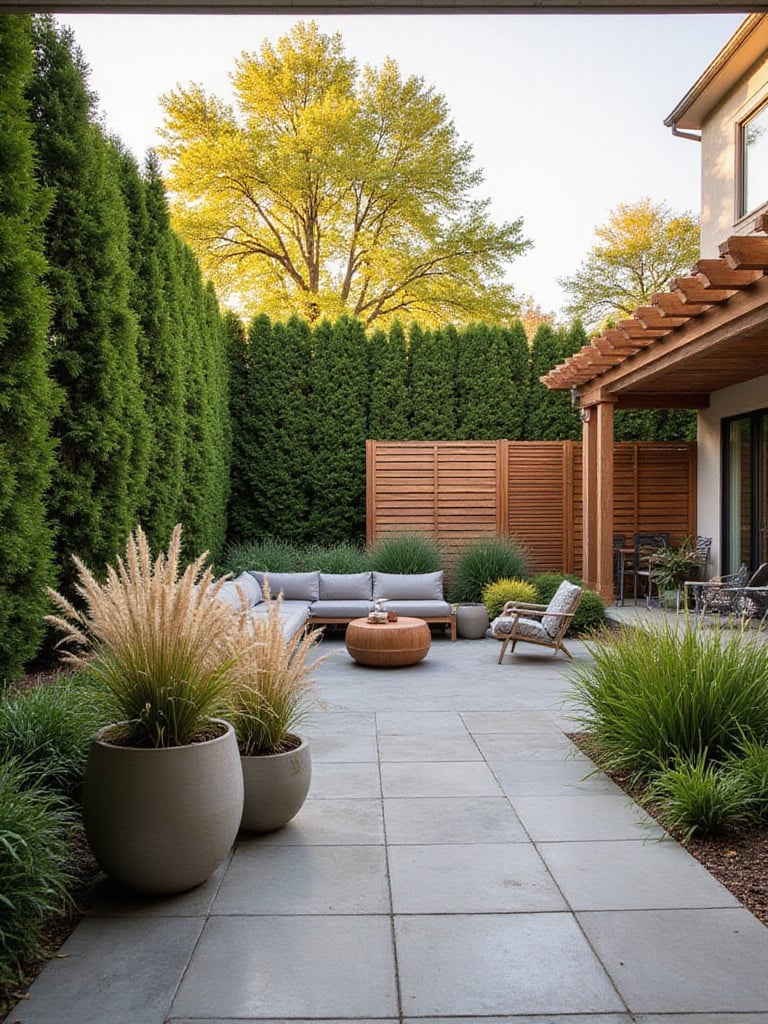
In colder regions, a fire pit or outdoor fireplace becomes a natural gathering point during cooler months, especially when surrounded by comfortable seating. For hot climates, misting systems provide gentle cooling without soaking furnishings. Retractable screens can block prevailing winds or intense sun while maintaining views and connection to the landscape.
This chameleon-like piece adapts to various styles by transforming with the seasons, ensuring your patio design remains functional throughout the year. Modular elements that can be reconfigured as weather patterns change help maintain the space’s usefulness for all generations regardless of season.
While technology might seem counter to outdoor enjoyment, thoughtfully integrated tech features can enhance multi-generational use of your patio. Consider weather-resistant speakers for music that different generations can enjoy, outdoor-rated televisions for family movie nights, and conveniently placed charging stations that keep devices powered without dominating the space.

For families with older adults, smart lighting systems with simple controls provide independence and safety. For households with children, consider how technology might facilitate outdoor learning or creative play. The key is integrating these elements discreetly so they enhance rather than distract from the natural elements of your patio design.
What separates artisanal quality from mass-produced is the thoughtful integration of technology in ways that serve genuine family needs rather than simply showcasing the latest gadgets. The best multi-generational patios incorporate tech elements that solve specific challenges or enhance particular activities your family enjoys together.
While togetherness is beautiful, successful multi-generational living also requires respecting boundaries and providing privacy. Your patio design should include some areas where different generations can retreat for quiet conversation or peaceful reflection. These spaces remain visually connected to the main gathering areas but offer acoustic separation and a sense of retreat.

Consider creating conversation nooks with seating arranged to naturally contain sound, or quiet reading corners partially screened by plantings or decorative panels. These semi-private spaces become particularly important during extended family gatherings when individuals might need brief respite from group activities before rejoining the larger gathering refreshed.
The evolution of this trend reflects broader cultural shifts toward recognizing the importance of both togetherness and privacy in maintaining healthy family dynamics. The most successful multi-generational patio designs balance these seemingly contradictory needs with grace and intention.
Circulation routes throughout your patio design should accommodate family members of all ages and abilities. Pathways should be wide enough for mobility devices (minimum 36 inches, but 48 inches is better), with smooth, stable surfaces and minimal level changes. Where steps are necessary, include adjacent ramps or ensure steps are clearly visible with contrasting materials and adequate lighting.
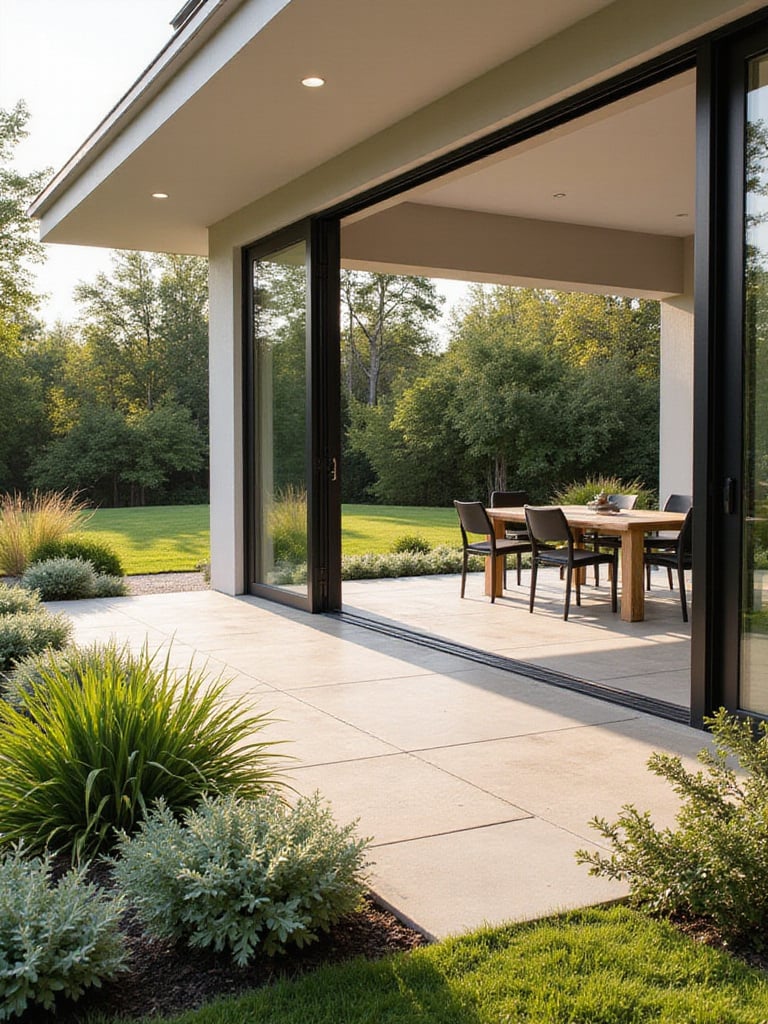
Consider how people move between different patio zones—are there multiple ways to navigate the space? Can someone with mobility limitations reach all the key areas? Are pathways clear and unobstructed by furniture or decorative elements? These practical considerations ensure no family member feels excluded from any part of your outdoor gathering space.
The finishing touch that elevates the entire look… is ensuring these accessible elements are so beautifully integrated into your patio design that they appear intentional rather than afterthoughts. When accessibility becomes an inherent part of your design language, the entire space feels more welcoming.
Family gatherings rarely have the luxury of rescheduling for perfect weather, making protection from unexpected elements essential in multi-generational patio design. Consider retractable awnings, pavilions with adjustable sides, or pergolas with movable covers that can quickly adapt to changing conditions. These flexible solutions allow gatherings to continue regardless of light rain or intense afternoon sun.
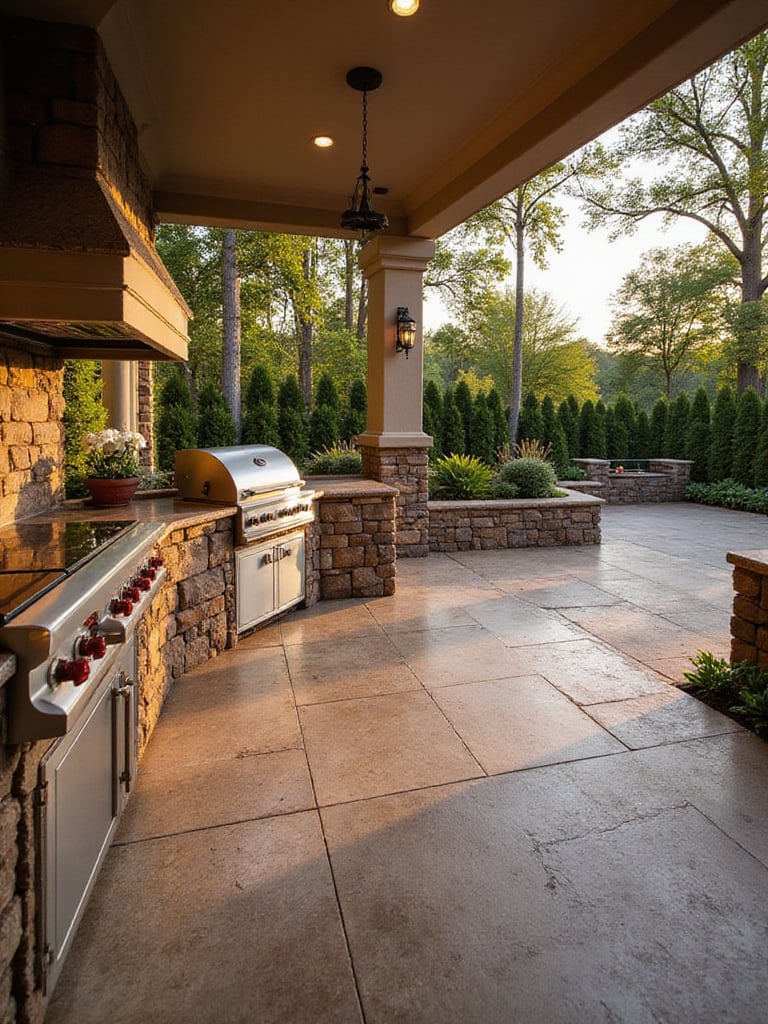
Remember that different generations have varying tolerances for weather conditions. Older adults may need more consistent temperature control, while children might be less bothered by brief weather changes. Creating multiple micro-climates within your patio design allows family members to find their comfort zone regardless of conditions.
The unexpected environmental benefit comes from extending your home’s livable space outdoors with appropriate weather protection, reducing the need for larger indoor spaces that require more energy to heat and cool. This approach to patio design becomes both family-friendly and environmentally responsible.
Evening often brings cooler temperatures and magical ambiance to outdoor spaces, making thoughtful lighting essential for multi-generational enjoyment. Beyond basic safety illumination, consider how lighting creates atmosphere and extends the usability of your patio into evening hours when families often have time to gather after work and school commitments.

Layer your lighting approach with path lights for safety, ambient lighting for general illumination, and accent lighting to highlight special features. Include some adjustable options that can be brightened for activities requiring more visibility (like games or crafts) and dimmed for relaxed conversation. Consider how light levels affect different generations—aging eyes need more illumination but are often more sensitive to glare.
The ambient experience changes the entire room’s energy… when lighting is thoughtfully designed to support various evening activities while creating a warm, welcoming atmosphere. This attention to detail in your patio design ensures family gatherings can extend naturally from day into evening.
Perhaps the most important consideration in multi-generational patio design is planning for change over time. Children grow, adults age, and family needs evolve. Creating a framework that can adapt to these changes ensures your outdoor space remains functional and beloved through various life stages.
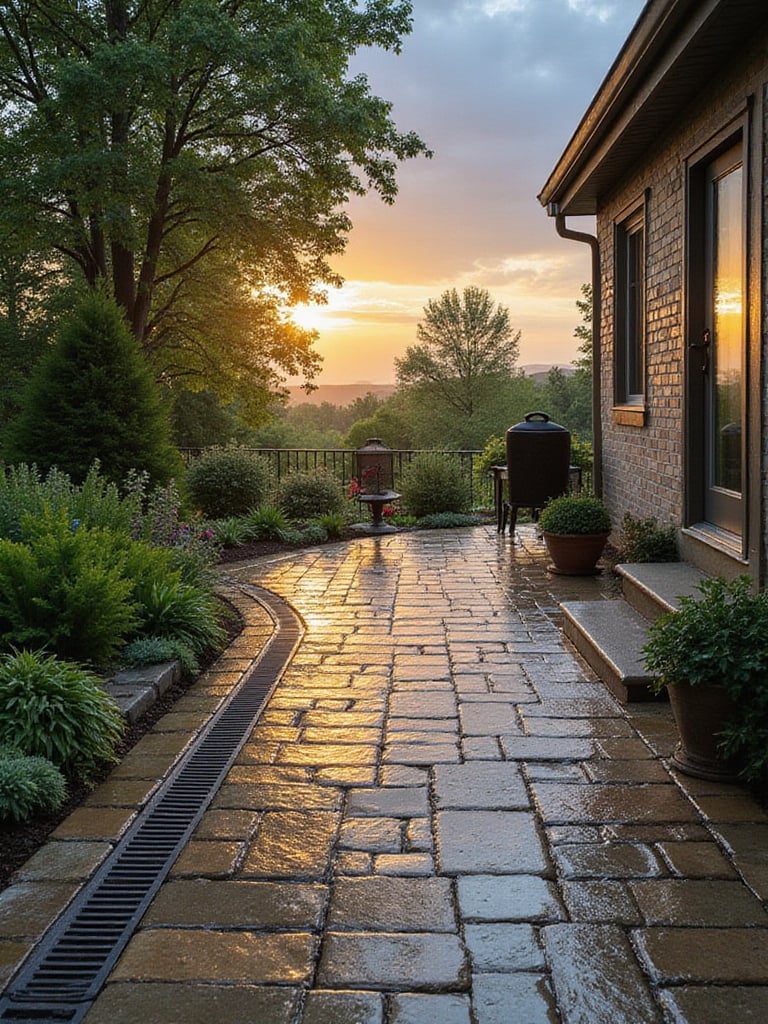
Incorporate elements that can be easily modified—furniture that reconfigures, planters that could become seating, areas that might transition from play spaces to teen hangouts to additional adult seating as family demographics shift. Consider how the space might need to accommodate additional mobility supports in the future, and plan infrastructure accordingly.
The investment value comes from the exceptional adaptability built into every aspect of your patio design. When foundational elements are thoughtfully planned, surface-level changes can refresh the space for new needs without requiring costly structural modifications.
A thoughtfully designed multi-generational patio becomes more than just an outdoor space—it’s a foundation for family connections that span decades. By considering the needs of all family members, from the youngest to the oldest, you create an environment where memories are made, traditions are passed down, and relationships flourish across generational boundaries.
The best multi-generational patio designs balance practical considerations with emotional resonance, creating spaces that function beautifully while feeling deeply personal and inviting. Whether your family gathers daily or just for special occasions, these outdoor spaces become the backdrop for life’s meaningful moments—a worthwhile investment in your family’s togetherness and wellbeing for years to come.